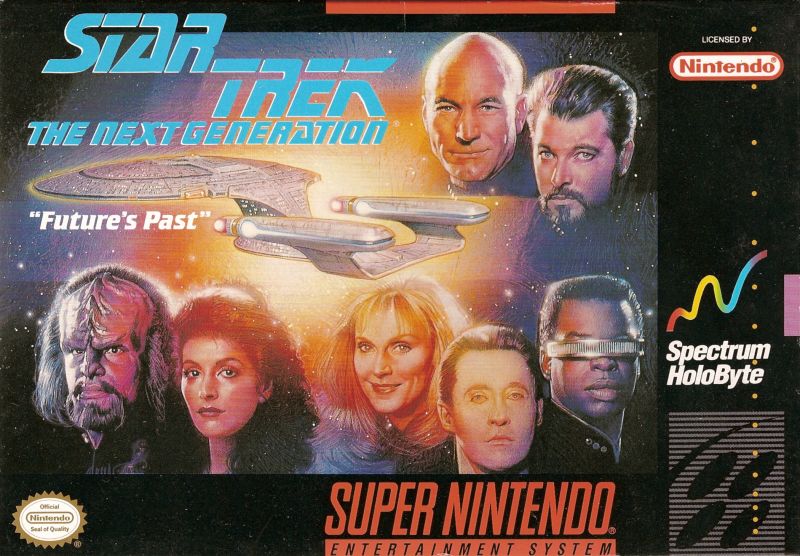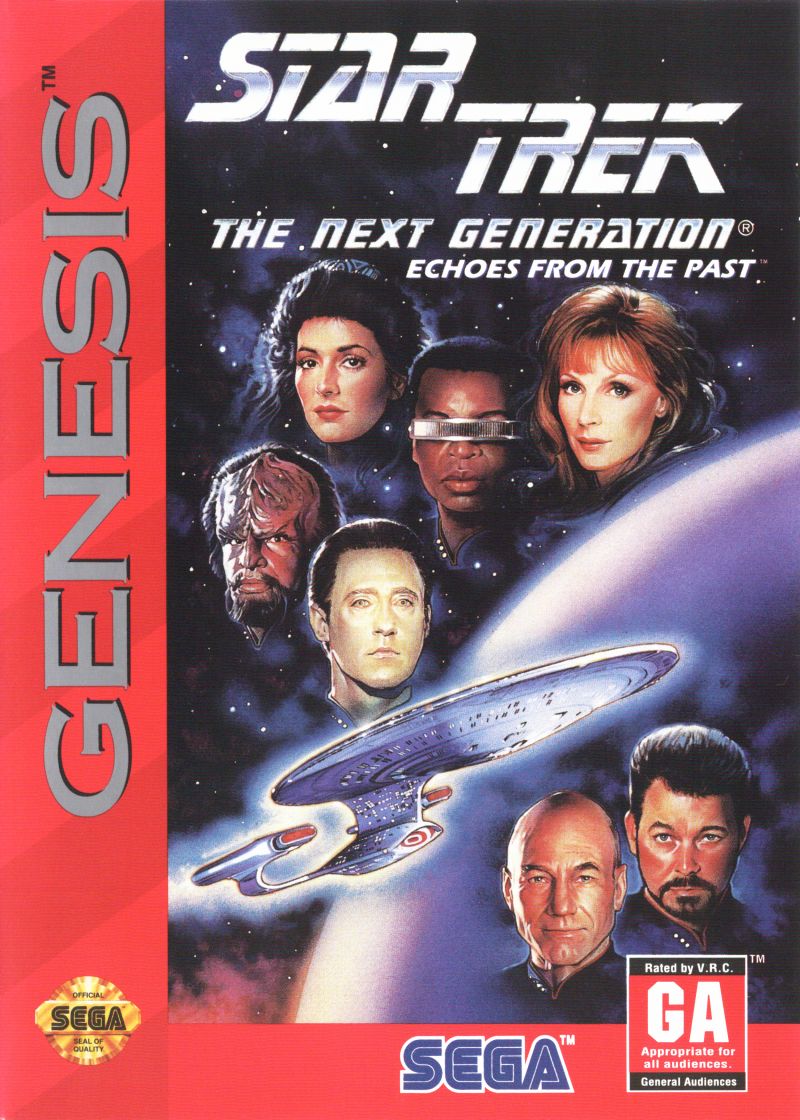Flight Simulator: Star Trek: The Next Generation – Future’s Past/Echoes from the Past (Super NES, SEGA Genesis)

Thus begins the odd, postmortem life of Star Trek: The Next Generation.
It’s interesting how Star Trek: The Next Generation and Star Trek: Deep Space Nine only seemed to increase their cultural capital after the TV shows themselves were cancelled. 1994-1996 can in some ways be read as the peak of their popularity, with their syndicated reruns capturing the world’s attention almost more than they did in their initial run. Really the only comparable case study on this front would be their predecessor. And the tie-in media and parody works reached a creative fever pitch right alongside them: Although there was a brand new Star Trek TV show and film series in the works, it’s the franchise’s Long 1980s output that seemed to to hold everyone’s imaginations the strongest.
This was an odd period in my own life and personal fandom because of this. I’d read “All Good Things…”, and Star Trek: Deep Space Nine Magazine wasn’t in stock in my corner market anymore. As far as I was concerned those shows were thoroughly done and over…Yet Playmates’ toy lines for them soldiered on for two years more. The DC and Malibu comics series continued to go strong, and I had a whole year’s worth of stories to catch up on. I didn’t watch Star Trek anymore, yet my Star Trek “fandom” was, at least for the short term, just getting stronger. And in 1994, the serious big kid video games started to come out, and I certainly took notice.
1994 marked the peak of the fourth console generation, a hardware cycle utterly defined, at least in the West, by the turf war between Nintendo’s Super Famicom (A.K.A. the Super Nintendo Entertainment System) and SEGA’s Mega Drive (A.K.A. the SEGA Genesis). This was a fandom war more or less initiated by SEGA’s North American branch in 1989 when they aggressively marketed the Genesis as the home console for hip, edgy young adults (basically meaning 12-year old boys) in contrast to the NES, which they positioned as, if you’ll excuse the phrasing, a baby’s toy. SEGA of America made their case primarily by comparing (and misrepresenting) internal specs and had an increasingly hard time maintaining this image after 1991 when the Super NES, in almost every measurable way a technically superior machine, was released as a direct competitor to the Genesis. In spite of an archetypal video game industry moral panic kickstarted by Mortal Kombat and enthusiastically pushed by Hillary Clinton and Joseph Lieberman, which briefly saddled Nintendo with a dreaded uncool “kiddie” reputation, they remained the industry leader throughout the fourth generation and are today generally considered the cycle’s “victor” by the sorts of unfortunate and disturbing people who keep track of these things.

But that’s still a year or so away. In 1994 we’re at the cultural, commercial and creative peak of the fourth generation with cult favourite critical darlings like Super Metroid and Final Fantasy VI and the pop culture juggernaut that was Donkey Kong Country dominating industry news and the playground set alike.
…
